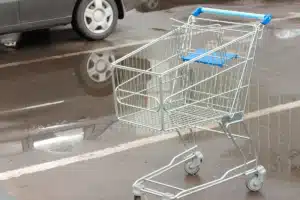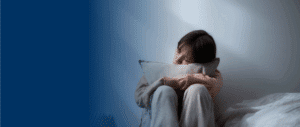What Are Common Slip and Fall Injuries?
- Slip and falls often lead to head injuries ranging from minor concussions to long-term traumatic brain injuries.
- Spinal cord injuries from slip and fall accidents can cause chronic pain and mobility issues that change a victim’s quality of life.
- Broken bones and serious joint damage can be incredibly painful and affect a person’s ability to move around.
- Soft tissue damage, including sprains, tears, and lacerations, may seem minor at first but result in ongoing complications without treatment.
- Slip and fall accident victims often suffer from psychological issues that can impact their mental health.
Slip and falls occur when a property owner fails to keep their premises reasonably safe, causing a fall, injuries, and damages. The most common slip and fall injuries include head injuries, broken bones, soft tissue injuries, joint damage, and psychological effects from the accident. While some of these injuries are minor, others can have long-term consequences on victims and their families.
Our attorneys share common injuries from slip and falls and how you can claim compensation for your financial losses and suffering.
Head Injuries
An unexpected fall often leads to head trauma as the victim’s head hits the ground, a railing, or other objects in the way. In some situations, the person may experience a sudden jolting movement of the head, which causes the brain to twist or bounce against the skull.
After a slip and fall, injuries to the head can range from mild concussions to severe traumatic brain injuries (TBIs). Common slip and fall head injuries include:
- Concussion
- Brain contusion
- Skull fractures
- Intracranial hemorrhage
- Diffuse axonal injury (DAI)
Head injury symptoms, including dizziness, confusion, or blurred vision, may not be immediately apparent. It’s crucial to seek medical assistance right away to avoid permanent implications, such as cognitive or behavioral issues. Although older adults over 65 have the highest risk of a fall, anyone can suffer a head injury from a slip and fall accident.
Back and Spinal Cord Injuries
Injuries to the back and spinal cord occur often during a fall. When people land in an awkward position, twist while trying to catch themselves, or hit their body against something on the way down, it can result in these injuries:
- Herniated disks
- Ruptured disks
- Compression fractures
- Vertebral fractures
- Dislocated vertebrae
- Severe spinal cord damage
Spinal cord injuries are often linked to chronic pain, mobility issues, and lengthy recovery times. Even minor back injuries can have long-term effects that impact a person’s quality of life.
Broken Bones and Fractures
Bone fractures are one of the most common slip and fall injuries, particularly with individuals who are 65 or older, suffer from osteoporosis, or have a history of fractures. Types of broken bones after a slip and fall may include:
- Broken wrists and hands
- Broken arms
- Elbow fractures
- Broken ankles
- Fractured ribs
- Broken hip bones
Fractures of the humerus, ulna, and radius are especially common when someone tries to catch themselves during a fall, while hip fractures occur most often in older adults. These injuries can lead to complications such as surgery, immobilization, or a permanent loss of range of motion.
Soft Tissue Injuries
Slip and fall accidents can cause painful soft tissue injuries that are not visible right away. However, people with these types of injuries will experience lingering or worsening pain, swelling, bruising, and limited movement. Common soft tissue injuries caused by slip and falls include:
- Sprains and muscle strains
- Torn muscles, including rotator cuff tears
- Inflamed tendons
- Contusions or damaged blood vessels
- Stretched or torn ligaments, including the anterior cruciate ligament (ACL)
These injuries may not be visible on an X-ray and possibly misdiagnosed. Without treatment, people with soft tissue injuries may have to miss work or time with their families due to painful symptoms and prolonged recovery times.
Knee Injuries
The knee is a complex hinge joint that connects several bones and muscles in the leg, affecting almost every leg movement. When a slip and fall accident causes a twisting motion to one or both legs, knee injuries are very common, including:
- Meniscus tear
- Torn quadriceps or patellar tendon
- Damaged or torn ACL
- Torn posterior ligament (PCL)
- Torn medial collateral ligament (MCL)
- Torn lateral collateral ligament (LCL)
- Dislocated knee
Because the knee is pivotal for bending, extending, twisting, and overall stability, knee injuries can be debilitating in many ways. Not only are they painful, but they typically require surgery, extensive physical therapy, and ongoing care to reach a full recovery. In many cases, the physical effects of a knee injury are long-lasting or even permanent.
Cuts and Lacerations
Falling on rough surfaces or onto sharp objects, such as glass, can cause cuts, abrasions, and lacerations. Deep cuts can lead to serious hemorrhaging and damage to underlying muscles, tendons, or nerves. Severe bleeds can result in the body going into shock or life-threatening blood loss without immediate medical intervention.
Even when cuts or scratches seem minor, broken skin increases the risk of infections that may spread and cause health complications. Delayed treatment is particularly dangerous for those with existing blood conditions, compromised immune systems, or a susceptibility to infections.
Additionally, these types of injuries may have long-term effects, including scarring, chronic pain, functional or mobility issues, or permanent nerve damage. When the cuts and lacerations are to the face or other highly visible areas of the body, injured people also experience emotional distress from the cosmetic damage.
Emotional and Psychological Injuries
When researching what the most common slip and fall injuries are, most people think of physical injuries. However, a slip and fall accident can be an emotionally traumatic event for many people, especially when someone else’s negligence led to their injuries. The psychological impact and mental health conditions connected to slip and falls include:
- Post-traumatic stress disorder (PTSD)
- Anxiety
- Depression
- Increased fear of falling
The fear of re-injury from a fall is often overwhelming for older adults and others who suffered a serious injury from the accident. This fear and anxiety can lead to being more withdrawn or avoiding activities. If a property owner caused your injury by failing to notice or remove hazards, a premises liability attorney can help you claim compensation for your emotional suffering and other losses.
How Cutter Law Can Help After a Slip and Fall Accident
Falls cause the majority of non-fatal injuries in the United States, with more than 8.5 million people receiving emergency room treatment for fall-related injuries annually. If you were injured in a slip and fall accident, Cutter Law is ready to help you take legal action and seek compensation for your damages.
Our California slip and fall lawyers can assist with different types of cases, including:
- Grocery store falls
- City or public property falls
- Injuries in apartment complexes
- Falls in parking lots
- Restaurant falls
- Injuries in gyms
- Injuries in retail stores
- Injuries in hotels
Family-owned, California-based, and client-focused, our attorneys work together to investigate property conditions, gather evidence, build your case, and demand justice. Call (888)-285-3333 or contact us online to schedule your free consultation today. We can explain your rights, determine if you have a case, and explore how long your slip and fall claim may take.

You may be able to sue a public park for injury if the government entity responsible failed to maintain safe conditions.

If you suffer injuries from a parking lot fall, you may be able to sue the owner if they knew or should have known about the condition.

You can pursue compensation from an unlicensed driver, but you must prove their fault in the accident.
